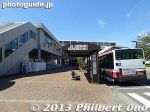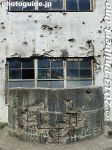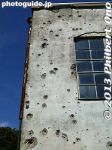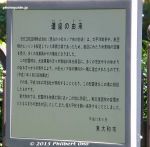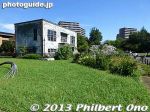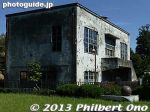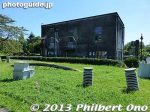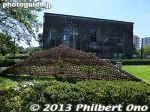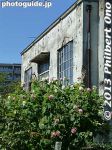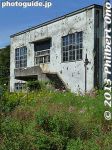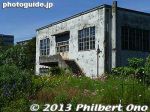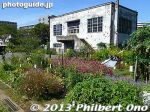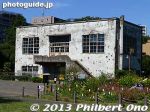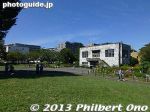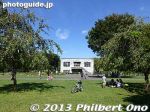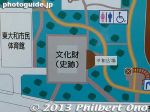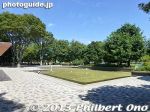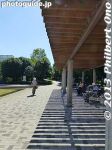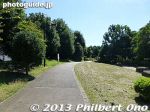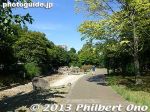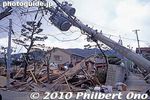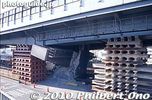 Image search results - "ashiya" Image search results - "ashiya" |

Arashiyama is another major tourist spot in Kyoto with a river, bridge, boat rides, temples, cormorant fishing, and more. Saga-Arashiyama Station is one rail station near Arashiyama.
|
|

Arashiyama is a National Historic Site and Place of Scenic Beauty. This is the Oi River.
|
|

Togetsukyo Bridge 渡月橋
|
|

Fake geisha at Arashiyama, Kyoto. (Tourists who got a geisha makeover and tour famous spots to get their pictures taken.)
|
|
|
|
|

Togetsukyo Bridge 渡月橋
|
|
|

Togetsukyo Bridge 渡月橋
|
|

Togetsukyo Bridge 渡月橋
|
|
|
|
|
|
|
|
|
|
|
|

Yakata-bune boat ride at Arashiyama, Kyoto.
|
|

Boats for seeing cormorant fishing.
|
|

Deluxe boat for seeing cormorant fishing.
|
|

Deluxe boat for seeing cormorant fishing.
|
|

From July 1 to Sept. 23, Arashiyama also has ukai cormorant fishing. Buy your tickets at this booth slightly upstream from Togetsukyo Bridge.
|
|

The ukai cormorant boats operate twice each evening at 7 pm and 8 pm (6:30 pm and 7:30 pm in Sept.). ¥1,800 for adults and ¥900 for kids age 4–12.
|
|

On board a yakata-bune to view ukai cormorant fishing. Fits about 10 people.
|
|

The boats are hitched together.
|
|

Gifu is not the only place where you can see ukai cormorant fishing.
|
|

Ukai cormorant fishing on the river at Arashiyama was quite enjoyable. It's cheaper than in Gifu, and the cormorants passed by maybe 6 times.
|
|

Yakata-bune boat steerer.
|
|
|
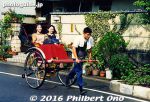
Getting around Arashiyama by rickshaw is popular.
|
|

Arashiyama's famous bamboo grove.
|
|

Tenryuji temple
|
|

Tenryuji temple is the main temple of one of the 15 branches of the Rinzai school of Zen Buddhism.
|
|

Tenryuji is a UNESCO World Heritage Site, part of the "Historic Monuments of Ancient Kyoto".
|
|

Tenryuji temple's Kuri building.
|
|
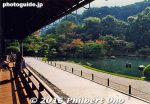
Tenryuji's Japanese garden.
|
|
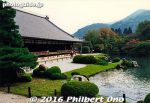
Tenryuji's Japanese garden.
|
|

Tenryuji
|
|
|
|
|
|
|

Misora Hibari Museum in Arashiyama.
|
|

19th Century Hall, SL & Piano Museum
|
|

19th Century Hall, SL & Piano Museum and sculpture of locomotive wheels.
|
|

Tatami mat shop in a thatched roofed building.
|
|

Tatami mat shop
|
|
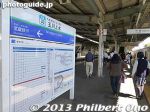
Higashi-Yamato Minami Park is a large park with greenery and sports facilities. One interesting edifice is the former Hitachi Aircraft Transformer Substation pockmarked with bullet holes from World War II. The park was formerly the US Air Force's Yamato Air Station. Before that from 1938 and during World War II, it was the site of a military aircraft engine factory. Near Tamagawa Josui Station on the Seibu Haijima Line.
|
|
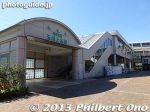
Tamagawa Josui Station
|
|
|
|
|
|
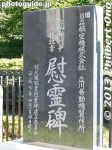
Memorial for the workers at the Hitachi Aircraft engine factory who died from aerial bombings by the US during World War II.
|
|
|
|
|
|
|
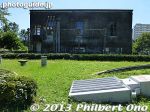
Back of former Hitachi Aircraft Transformer Substation.
|
|
|
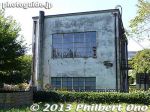
Side of former Hitachi Aircraft Transformer Substation.
|
|
|
|
|
|
|
|
|
|
|
|
|
|
|
|
|
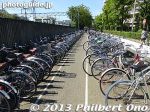
Bicycles near Tamagawa-Jōsui Station.
|
|

Bicycles near Tamagawa-Jōsui Station.
|
|
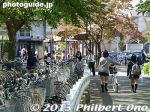
Bicycles near Tamagawa-Jōsui Station.
|
|
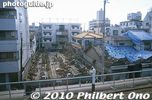
The next day, I again visited Kobe, this time by train to Ashiya Station. See gravestones overturned.
|
|
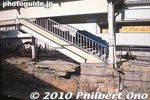
Ashiya Station platform.
|
|
|
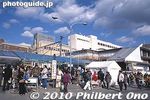
Ashiya Station
|
|
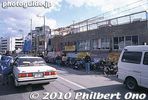
Collapsed shopping center near Ashiya Station. That's the 2nd floor which now looks like the 1st floor.
|
|
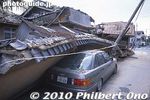
Crushed Audi.
|
|

This house stood firm, while its neighbor collapsed.
|
|

Not a good idea to live in a house standing right next to another building.
|
|
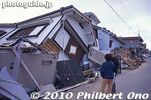
Houses along the train tracks in Ashiya. Basically, Japanese-style homes with heavy tile roofs collapsed easily, while concrete homes withstood the quake better.
|
|
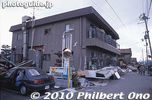
Collapsed 1st floor of an apt. building. I don't recommend living on the 1st floor of any building in Japan.
|
|
|
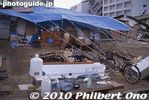
House covered by a blue tarp to protect against rain.
|
|
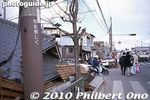
Sign says, "Keep our town beautiful."
|
|

Another distinct pattern was buildings on stilts easily collapsing.
|
|
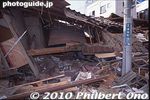
A makeshift altar placed on the collapsed home. Someone died here. By the time I visited, most of the trapped people had been rescued.
|
|
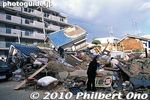
Sifting through the rubble.
|
|
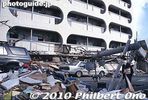
I really felt sorry for the people who had just bought a house or condo with a 35-year mortgage and the house or condo was destroyed by the quake. They are stuck paying off the housing loan and also have to pay monthly rent at a new place.
|
|
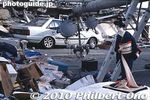
At least they recovered some things.
|
|
|
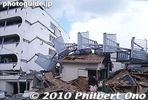
The emergency stairway got torn off this building whose first floor got crushed.
|
|
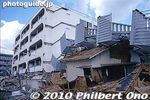
Something they needed the most was torn off the building. If you live in a high-rise building in Japan, have ropes ready in your veranda in case your stairway is destroyed like this.
|
|

When you look at these toppled homes, you cannot help but think that they do look flimsy with thin walls. The problem is, such cheaply-made homes are very common in Japan.
|
|
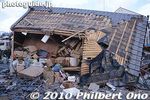
The Japanese tile roof makes the home top-heavy, making it more vulnerable to horizontal swaying and eventual toppling.
|
|

The famous scene of the expressway collapsed on its side was completely gone 10 days after the quake. They had cleared the collapsed section (about 600 meters) of the road.
|
|

The collapsed expressway was so embarrassing that they made it a priority to clear it ASAP.
|
|

The expressway that supposed withstand such quakes collapsed. It was a major scandal. The shinkansen bullet train tracks also had broken concrete columns which revealed pieces of scrap wood mixed in.
|
|

The engineers said this would be strong enough, but they were dead wrong.
|
|
|
|
|
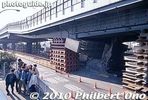
Earthquake tourists getting their picture taken.
|
|

Fukae Shopping Center
|
|
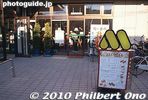
I was amazed to see Mos Burger back in business so soon. It was another sign of a very progressive recovery.
|
|

Tofukuji is a Zen Buddhist temple famous for red maple leaves. Quite spectacular and photogenic landscapes. One of the five great Zen temples of Kyoto. Tofukuji temple is the easiest way to see autumn leaves in Kyoto. From Kyoto Station, it's only one train stop (JR Nara Line) away (get off at Tofukuji Station and walk 10 min.). But the trains get sardine-packed in the morning. Expect large crowds during late Nov.
|
|
|

Long line to enter Tofukuji, but it progressed quickly enough.
|
|

This is the symbol of Tofukuji temple, a bridge named Tsutenkyo (通天橋) that goes across this mass of red Japanese maple trees. You see this photo in all the Kyoto travel brochures.
|
|
|
|

There was a line to get into the temple (¥400 admission).\\
|
|

Longer line to get to Tsutenkyo Bridge. But we enjoyed the colors along the way. The line went along fast enough.
|
|
|

The trees are very well placed and very photogenic.
|
|
|
|
|
|
|
|
|
|
|
|
|
|

Tofukuji Temple, Kyoto
|
|

That's the bridge where everybody is going. Tsutenkyo (通天橋)
|
|

Tsutenkyo (通天橋)
|
|
|
|
|
|
|
|
|
|
|
|
|
|
|
|
|
|
|
|
|
|

Tsutenkyo Bridge.
|
|
|

View from Tsutenkyo Bridge.
|
|

View from Tsutenkyo Bridge, Tofukuji Temple, Kyoto. More pretty views from the bridge. When the sun's out, the colors are spectacular. The colors really look like this, I didn't digitally enhance the colors.
|
|
|

On the bridge, this sign says "No photos" because they don't want people to stop and take photos and hold up the line going through the bridge. Obviously, no one paid attention to this. We all stopped and took photos.
|
|

Tofukuji Temple, Kyoto
|
|
|

The middle of the bridge has this little deck protruding outward.
|
|

View from Tsutenkyo Bridge. That bridge in the distance is where you enter the temple.
|
|

View from Tsutenkyo Bridge. That bridge in the distance is where you enter the temple.
|
|
|
|
|
|
|
|
|
|
|
|
|
|
|
|
|
|
|

Long line of people entering the temple. They were in for a treat and it was worth the trip. Happy autumn 2017!
|
|
|
|
|
|
|

Sanmon Gate, Tofukuji's main gate. National Treasure.
|
|

Chic couple in Kyoto.
|
|
|
|
|
|


















































